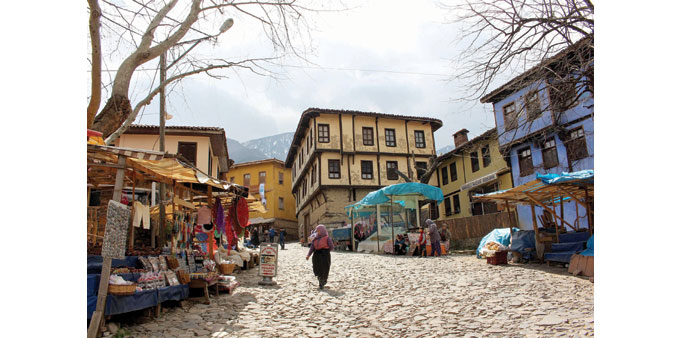A glimpse of Cumalikizik.
By Anand Holla
As part of a series of lectures that introduces to Doha “the work of key Turkish experts in the fields of Archaeology and Heritage Conservation”, Professor Dr Neslihan Dostoglu of Istanbul Kultur University will share precious insights today.
Titled Bursa and Cumalikizik World Heritage Site: Challenges of Preserving Heritage Architecture, the lecture is the penultimate one in a six-part series on Archaeology and Heritage Conservation organised by Qatar Museums and the Ministry of Culture and Tourism of Turkey in partnership with UCL Qatar (UCL-Q) as part of Qatar Turkey 2015 Year of Culture.
Aimed at students, faculty staff and general audiences, the informal lectures and talks were scheduled for October and November at the MIA auditorium and in the UCL-Q Auditorium in Education City. Dostoglu’s lecture will be held at the Georgetown Auditorium in Education City at 6pm. The entry is free.
A note shared by Dr Ferhan Sakal, Consultant – Head of Archaeology Operations, Qatar Museums offers more information on the subject of the lecture: Located on the slopes of Uludag Mountain in the north-western part of Turkey, Bursa represents the creation of an urban and rural system establishing the first capital city of the Ottoman Empire and the Sultan’s seat in the early 14th century.
The specific development of Bursa emerged from five focal points, mostly on hills, where the first Ottoman sultans established public kulliyes consisting of mosques, madrasas, hamams, imarets and tombs. These kulliyes, one of which constituted the core of the city’s commercial centre, featured as centres with social, cultural, religious and educational functions, and were surrounded with neighbourhoods within the course of time. Kulliyes were also related with rural areas, one of which was Cumalikizik, through the waqf system.
In the process of the nomination of Bursa on the World Heritage List, the management plan was prepared to create public awareness and to offer a shared framework in which all relevant and authorised people and institutions participated.
The implemented management plan plays an important role in directing the conservation and management of the property. It requires review and updates at regular intervals to respond to changing needs and challenges according to the quality assurance indicators defined in the plan, and the monitoring indicators.
Dostoglu, whose study areas are architectural design, theories and principles of design, preservation of cultural wealth, revitalisation and sustainability, studied architecture at Middle East Technical University in Turkey. She received her PhD in Architecture from University of Pennsylvania in USA in 1986, after being awarded with Fulbright Scholarship.
She worked as a research assistant at METU, and University of Pennsylvania, and as an assistant professor at Anadolu University. Following four years in practice, she resumed her academic career after 1994 at Uludag University in Bursa, serving as the Chair of the Department for nine years. Presently she is the Chair of the Department of Architecture at Istanbul Kultur University, and teaches architectural design studio, and theories and principles of design.
Dostoglu, who was a member of the Preservation of Cultural and Natural Wealth Committee in Bursa from 1998 to 2008 (chair for the last five years), is presently the Head of UNESCO Heritage Site in Bursa. She is also on the Editorial Board of three journals in Turkey, including the indexed architectural journal Mimarlik.
She is the author of the book Bursa in the Ottoman Period and also Bursa Cultural Inventory: Monumental Buildings, the editor of the book Women and Architecture in the Republican Period, and the co-editor of the books Tale of the Bazaar: Bursa, and Historical Neighborhoods of Bursa.
The last lecture in the series is by Professor Dr Edhem Eldem, Boaziçi University, who will talk on Osman Hamdi Bey: An Ottoman Archaeologist at MIA Auditorium, on November 23 at 6pm.



